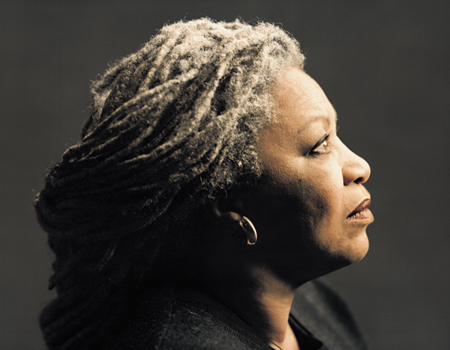Toni Morrison. Shamefully, I’d never heard of her until I began my 21st Century Women’s Fiction module at university, and now I feel like a little bit of an expert. Nobel Prize winner, Oprah Book Club best-seller, Princeton professor and subject of my latest academic essay, Morrison is something of a goddess among literary critics, and it’s easy to see why.
Morrison’s work tends to explore the history of African-American culture, and Love is no exception. Cosey’s Hotel and Resort was the place to be for ‘coloured people’ on vacation in the 1940’s because they were free to enjoy themselves free from discrimination. However, after integration, the hotel went out of business as a casualty of the civil rights movement and black upward mobility. While Morrison never denies the obvious benefits of the civil rights movement, she does acknowledge that with desegregation came a sense of loss for PoC as they lost their black only schools, hotels and other communities.
The novel begins in the 1990’s and centres around a number of women all haunted by the memory of the late Bill Cosey, the hotel’s charismatic owner. Living in the hotel are Heed, Cosey’s child bride and widow, Christine, Heed’s former best-friend and Cosey’s granddaughter, and Junior, a young con-woman helping Heed to write her life story. We also meet May, Christine’s unstable mother, Romen, a young boy having a sadomasochistic affair with Junior, as well as Sandler and Vida who both knew Cosey in life. Through first-person italicised soliloquies, we also meet L, who speaks from beyond the grave to tell us things that the other characters don’t know about the deceased Bill Cosey.
At first, the novel is a little difficult. Morrison doesn’t explain anything; instead, readers are drip fed information about who the characters are, their relationship to Cosey, and the secrets of their past. I hated it for a good 60 or so pages, but somewhere soon after, the loose ends begin to be tied together and the complex relationships between the characters and Mr Cosey become clearer. Morrison herself has labelled the novel ‘perfect,’ and while I would disagree that it deserves quite that title, I do believe that the book is an important read, and here’s why:
Morrison challenges the Western literary norm of having one central protagonist by allowing each of her characters to have a voice. As a marginalised person herself, Morrison understands the need to steer away from a ‘totalized’ viewpoint and, with the exception of Bill Cosey (whom I will discuss later), she allows each character’s perception of events to be told.
She also challenges the stereotypes of PoC, with L being ‘respectful, wise and discreet,’ as oppose to the loud and brash stereotype associated with black women, and Romen rescuing a girl from a gang-rape (because, surprise surprise, not all black men rape!). She also writes about race without talking about race, which I feel is extremely important and here’s why: part of white privilege is that white people do not see themselves as raced. My lecturer drew my attention to this in a seminar when she pointed out that chances are we only saw the Asian girls in the room as raced, when in fact, we are all raced. She spoke about how even though we may claim not to ‘see race,’ we cannot help but make assumptions about somebody who seems ‘other,’ and skin colour is unfortunately seen as other. By not explicitly describing her characters as raced (for example, ‘he looked down at his black hand,’ ‘she touched her afro hair’), she forces us to genuinely not see them as ‘other,’ elevating their status to that of white privilege (having an invisible race) and readers see them primarily as people without noticing their skin colour first.
(Note: I have never written about race or white privilege before, and am struggling to articulate properly the things discussed in the seminar without sounding like I am insulting PoC. That is not my intention. I am merely trying to point out that wherever PoC go, they are judged by their skin colour. By not describing her characters in a way that defines them as ‘other,’ Morrison is freeing them from such judgements and putting them in a more privileged position within the text).
Morrison also opens up debates about sexual violence. Bill Cosey married Heed when she was just 11, before her first period, and yet even though this is undoubtedly child abuse, the whole community blames Heed for the marriage, including her former best friend Christine. Just like Lolita, who was of course another fictional victim of child abuse, she is seen as a seductress, and the man who married her never has to answer for his actions. Feminist debate is also clear when a woman gets raped and Christine’s partner, Fruit, refuses to condemn the man for it. Added to Romen being ridiculed for rescuing a young girl from his friends’ gang-rape, and it becomes clear that Morrison is saying something the trend of victim blaming in cases of sexual violence.
Lastly, the novel silences the man who has ruined the lives of all those close to him. Cosey is not given a voice, his hotel and resort go out of business, and there are also suspicious circumstances surrounding his death which all become clear in the final chapter. Although Cosey was of huge importance in life, his legacy is denied him, as the novel focuses on the healing processes of the women that he left behind. Through the interlocking narratives, we learn about love of all kinds. We learn about romance, family and friendship. We learn that with love, often comes loss, betrayal and pain, but that heartbreak does not have to be permanent.
If you fancy something intelligent that has something to say, then this is the book for you.
